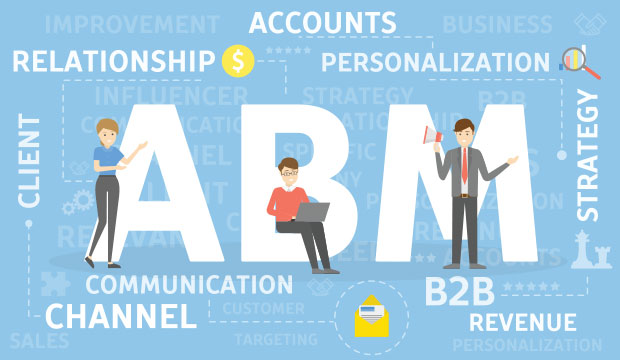Business-to-business marketing is evolving — and it’s not just the industry itself. Vendor marketing efforts with customers can and should evolve as well. When you see a vendor selected repeatedly, or it officially earns a designation as a preferred vendor, it’s a sign of marketing evolution.
Most B2B marketing efforts begin from a cold start. Either a vendor is new, with a new product category, or it is entering a new market and attempting to penetrate an account for the first time.
Regardless, the marketing involved for those cold spots is of the missionary variety, and a smart vendor will try to identify target prospects by job titles or functions to find people in departments that are likely to have a particular business problem.
With little to go on, a vendor easily can send introductory materials to a prospect that is ready for more, causing a sales cycle to stall — or worse. The opposite happens too.
Still, marketing is a numbers game. You don’t want to overinvest in an account, but you want to capture the business by having the right content at the right time. Better marketing requires better information, and that’s where marketing has been evolving.
A successful vendor will look for similar situations in a target account — where it might have similar business problems to sell to. The second marketing and sales effort usually is more efficient, simply because the first customer acts as an internal reference.
We know all this, and after the first sale, the marketing effort shifts from missionary to account-based simply because of the internal lines of communications the vendor can leverage.
A smart vendor knows not to rely too much on those internal lines of communication, because even in the best circumstances, a customer is free to look around and duty-bound to make the best selection.
ABM to the Rescue
This is where account-based marketing can shine. As an example, consider IBM’s account-based marketing strategy led by Amber Armstrong, vice president and CMO for IBM Watson IoT.
As many people know, Watson is an advanced technology combining natural language processing, information retrieval, knowledge representation, automated reasoning and machine learning to answer questions.
A few years ago, Watson’s signal achievement was to win the Jeopardy! game show playing against some very bright past winners. That set a high bar.
Watson-based products include Maximo for enterprise asset management; TRIRIGA for buildings, facilities and real estate management; and IBM Engineering for engineering lifecycle management and physical products design.
Two threads run through Watson IoT and its products. First, they’re all designed to find needles in haystacks — bits of critical information that big businesses need, which can have material effects on the top and bottom lines.
Second, the universe of people who care about what Watson IoT can find, and who have the budgets to implement Watson IoT solutions, is rather small. Marketing to these people is another needle-in-a-haystack problem that prompted IBM to seek help.
It turned to G2, perhaps the world’s biggest marketplace for businesses to discover, buy and manage software.
Marketing strategies that work at the director level are not likely to work at the C-level, simply because C-level execs are inundated wtih offers for solutions that will change their businesses for the better — but there’s only so much time in a day.
Frankly, the style of marketing that works at the director level often is not appropriate for those higher up, and it was those people Armstrong wanted to attract.
What to Do?
Getting the attention of and selling to the very top requires a two-pronged approach that Armstrong discussed in a recent interview.
The first part doesn’t differ much from conventional marketing. “We target on paid media and social media and we also target specific companies with specific messages,” she said.
One key difference is in the way Armstrong views G2, a firm that uses crowdsourcing to gather opinions of users to rate and rank companies and products.
G2 offers its customers the ability to customize “product profile pages” with pertinent information about their products, so that when prospective customers read the opinions of actual users, they can get additional information in the moment, without additional effort.
The G2 approach helps vendors break through the early marketing cycle and get a little closer to decision-makers during their deliberative processes, and that makes the initial sale look more like a follow on rather than an icebreaker.
Of course, G2 respects the privacy of its users, but just knowing that some interest was expressed by some person at a company often is enough to give salespeople something to work with.
IBM Watson IoT marketing targets a list of 3,400 major accounts, the small universe. Since each account has multiple divisions that could need any of the three Watson IoT products, identifying active buyers can be challenging. G2 enables its users to be more confident in identifying prospects and pursuing deals, including allowing users to get G2 Buyer Intent data.
As Armstrong puts it, “Old is new again.” The marketing techniques haven’t changed much but they’ve evolved, so that what used to be done with great effort now can be done more quickly and confidently, and with data that takes away the guesswork.
“When I started my career 15 years ago, we’d put together three- to four-page reference documents for customers,” she said.
That was time consuming, and she couldn’t be sure it was exactly what a customer needed. There always were wild cards too.
Would a customer talk to a prospect on the phone for a reference?
“With products like G2, the technology is now available to put a lot of information on a third-party review site. Customers can get feedback almost instantly,” Armstrong pointed out.
Combining customer data that’s been analytically vetted serves to democratize information and make it easier for both the vendor and prospect to get through initial evaluations. Use cases, customer stories, customer evaluations — all are available so that customers get what they need and avoid engaging in a sales process until they are ready.
That’s a small change, but it’s a big evolution in marketing.

























































Social CRM
See all Social CRM